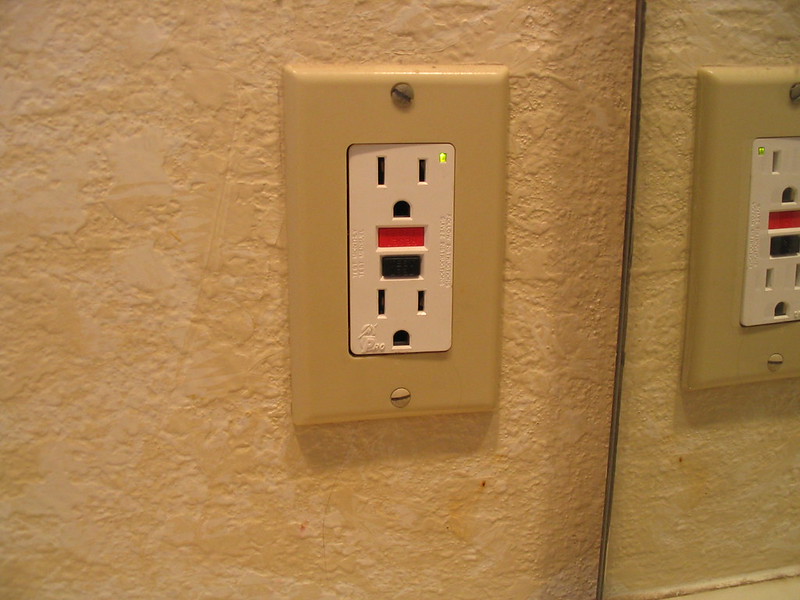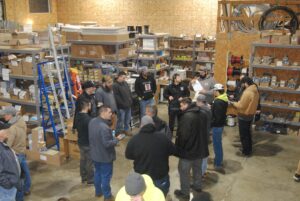
In this article, you will learn the basics of Ground Fault Circuit Interrupters, or GFCIs. Understanding what GFI stands for is essential for keeping your home or business safe from electrical hazards. R & T Yoder Electric, Inc. is a trustworthy company with a rich history in the electrical field, with experienced professionals like Rod and Tina Yoder leading the way. With their expertise and dedication, you can be confident in the safety and reliability of your electrical systems. Stay tuned to discover more about the importance of GFCIs and how they can benefit you in your everyday life.
What Does GFI Stand For: The Basics of Ground Fault Circuit Interrupters.
Have you ever been curious about what GFI stands for when it comes to electrical systems? Ground Fault Circuit Interrupters, commonly known as GFIs, play a crucial role in protecting you and your loved ones from electrical hazards. Let’s dive into the basics of GFIs and why they are essential components in electrical circuits.
Understanding Ground Fault Circuit Interrupters
Ground Fault Circuit Interrupters, or GFIs, are devices designed to protect against electrical hazards, such as electric shock and fires. These devices are commonly found in areas where water and electricity are in close proximity, such as bathrooms, kitchens, and outdoor receptacles.
How Do Ground Fault Circuit Interrupters Work?
GFIs work by monitoring the current flowing through the circuit. When the GFI detects a mismatch in the current, signaling a ground fault, it quickly interrupts the circuit, cutting off the power supply. This rapid response prevents electric shock and potential fires, making GFIs essential safety devices in residential and commercial settings.
Types of Ground Fault Circuit Interrupters
There are two main types of GFIs: outlet GFIs and circuit breaker GFIs. Outlet GFIs are installed in individual outlets and provide protection for specific areas. Circuit breaker GFIs, on the other hand, are installed in the main electrical panel and provide protection for an entire circuit.
The Importance of Ground Fault Circuit Interrupters
Ground Fault Circuit Interrupters are vital safety devices that help protect individuals from electrical accidents. Without GFIs, the risk of electric shock and fires increases significantly, especially in areas where water and electricity are present.
Preventing Electric Shock
One of the primary functions of GFIs is to prevent electric shock. In the event of a ground fault, the GFI quickly cuts off the power supply, significantly reducing the risk of electric shock to individuals. This rapid response can be a lifesaver in situations where water and electricity come into contact.
Reducing the Risk of Fires
Another critical role of GFIs is to reduce the risk of electrical fires. Ground faults can lead to overheating and potential fires if left unchecked. By interrupting the circuit at the first sign of a ground fault, GFIs help prevent fires from occurring and protect your property from damage.
Common Misconceptions About GFIs
Despite their importance, there are several common misconceptions about GFIs that continue to persist. Let’s debunk some of these myths to ensure you have accurate information about these life-saving devices.
Myth: GFIs Are Only Necessary Outdoors
While GFIs are commonly required in outdoor outlets, they are also essential in indoor locations where water may be present. Bathrooms, kitchens, laundry rooms, and basements are just a few examples of indoor areas where GFIs are crucial for safety.
Myth: I Don’t Need GFIs If My Home Is New
Regardless of the age of your home, it is essential to have GFIs installed in specific areas to protect against electrical hazards. GFIs are now required by electrical codes in many regions, ensuring that new constructions are equipped with these vital safety devices.
Installing Ground Fault Circuit Interrupters in Your Home
Installing GFIs in your home is a relatively straightforward process that can be done by a qualified electrician. Whether you need outlet GFIs or circuit breaker GFIs, professional installation ensures that these devices are correctly placed and functioning as intended.
Outlet GFI Installation
Outlet GFIs can be installed in individual outlets to provide localized protection in specific areas. These devices are typically installed in locations where water and electricity are in close proximity, such as kitchen countertops and bathroom outlets.
Circuit Breaker GFI Installation
Circuit breaker GFIs are installed in the main electrical panel and provide protection for an entire circuit. These devices are ideal for safeguarding multiple outlets and appliances connected to the same circuit. Professional installation is recommended for circuit breaker GFIs to ensure proper functioning and protection.
Testing and Maintaining Ground Fault Circuit Interrupters
Once GFIs are installed in your home, it is essential to test and maintain these devices regularly to ensure they are functioning correctly. Routine testing helps identify any issues with the GFIs and ensures that they provide the necessary protection.
Testing GFIs
Testing GFIs is a simple process that involves pressing the test button on the device to simulate a ground fault. If the GFI interrupts the power supply when the test button is pressed, it is working correctly. Regularly testing GFIs helps verify their functionality and provides peace of mind for homeowners.
Maintaining GFIs
In addition to testing, maintaining GFIs involves keeping them free of dust and debris that could interfere with their operation. Periodically checking the condition of the devices and ensuring they are not damaged or tampered with is essential for maintaining the safety of your electrical system.
Common GFI Troubleshooting Tips
If you encounter issues with your GFIs, there are several troubleshooting tips you can try before calling a professional electrician. Identifying and resolving minor issues with GFIs can help prevent electrical hazards and ensure the safety of your home.
Resetting the GFI
If a GFI trips and cuts off the power supply, you can reset the device by pressing the reset button. This action restores the power and allows you to resume using the outlet or circuit. If the GFI continues to trip after resetting, there may be an underlying issue that requires further investigation.
Checking for Ground Faults
If a GFI repeatedly trips, it may indicate the presence of a ground fault in the circuit. Inspect the outlets and appliances connected to the GFI to identify any potential sources of the ground fault. Disconnecting and testing each device can help pinpoint the issue and resolve it effectively.
Ground Fault Circuit Interrupters, or GFIs, are essential safety devices that play a crucial role in protecting individuals from electrical hazards. By understanding the basics of GFIs, their importance, and how to install and maintain them, you can ensure the safety of your home and loved ones. Remember to test and maintain your GFIs regularly and seek professional help for any issues you encounter with these life-saving devices. Stay safe and informed when it comes to electrical safety, and always prioritize the well-being of your family and property.
Next time you see a GFI in your home or workplace, you’ll know exactly what it stands for and why it’s there to keep you safe. Understanding the basics of GFIs empowers you to take control of your electrical safety and make informed decisions when it comes to protecting your property and loved ones. Take the necessary steps to ensure that your electrical system is equipped with the proper safety devices, including GFIs, and enjoy peace of mind knowing that you are safeguarded against electrical hazards.







